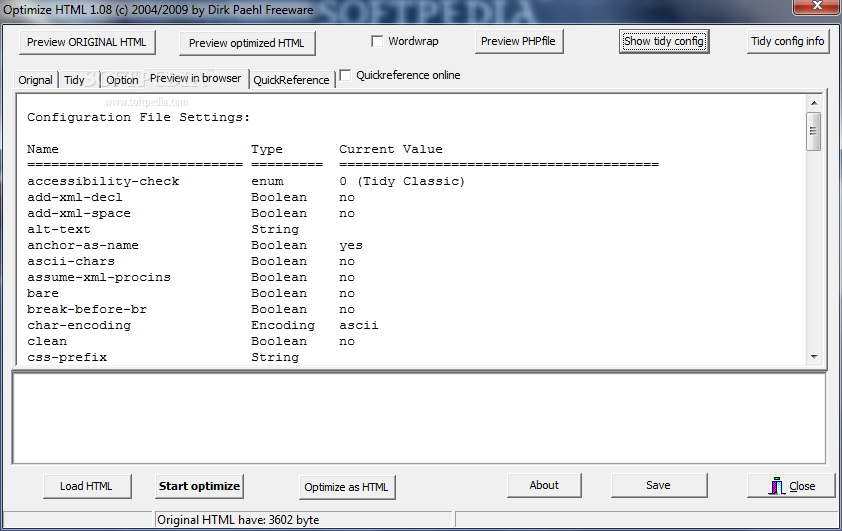

If you find yourself using media="all", it should be safe to just omit it and let browser set value implicitly. One of the possible values for media is “all”, which also happens to be a de-facto standard among modern (and not so modern) browsers. HTML 4.01 defines media attribute on STYLE elements, as a way of targeting specific medium - screen, print, handheld, and so on. Therefore I include them here not as a recommendation, but merely as an option. Optimizations explained below are often questionable, as they compromise clarity for size. But there’s still more ahead, and that “more” is removing redundant parts. We’ve covered some of the bad practices, that almost always have to be avoided. Not suprising, given that even popular apps like Textmate include wrong usage of charset. Searching for this pattern, reveals about 2000 occurrences. Testing shows that actual browsers behavior also matches specs in this regard. Note that the charset attribute refers to the character encoding of the script designated by the src attribute it does not concern the content of the SCRIPT element. The thing is that charset attribute only really makes sense on “external” SCRIPT elements - those that have “src” attribute. Sometimes I see documents that include this kind of markup: Īnother misunderstanding of SCRIPT element is that with charset attribute. There’s absolutely no reason to use this attribute, except for the rare cases when language version needs to be specified (and even that is somewhat unreliable and should probably be avoided if possible). This attribute is so archaic that it was already deprecated in 1999 (!), 10 years ago, when HTML 4.01 became an official recommendation. Probably one of the most misunderstood attributes is SCRIPT’s “language”. While CDATA blocks are a perfectly good way to prevent XML processor from recognizing It’s a noble goal that falls short in reality.

sectionsĪnother often needless error-prevention measure is inclusion of CDATA blocks in SCRIPT elements: Comments in scripts are just an unnecessary baggage and should be removed ferociously. There’s not much to say here, except that browsers that actually need this error-prevention measure (such as ‘95 Netscape 1.0) are pretty much extinct. One of the gross redundanies nowadays is inclusion of HTML comments - in script blocks. So what are the most common offenders? 1.

We’ll also talk about what can be done in a future. We’ll look at currently available minification tools, and analyze what they do wrong and right. In this post, we’ll take a look at HTML optimization: removing some of the common markup smells reducing document size by getting rid of redundant structures, and employing minification techniques. Smaller size is just a property of clean documents, and another reason to keep them this way. Clean markup means better accessibility, easier maintenance, and good search engine visibility. The reason to keep documents clean is not so much about faster load times, as it is about having a solid and robust foundation to build upon. All this baggage adds extra weight to pages that are supposed to be as light as possible.

If you look carefully at pages on the web (even those that are supposed to be highly optimized), it’s easy to spot a good amount of redundancies, and inefficient or archaic structures in their markup. Client-side optimization is getting a lot of attention lately, but some of its basic aspects seem to go unnoticed.


 0 kommentar(er)
0 kommentar(er)
